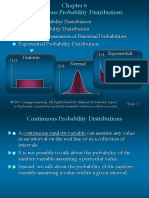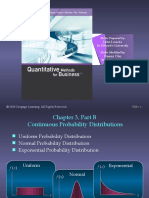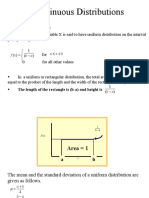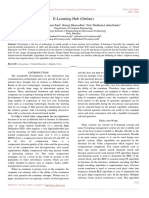0% found this document useful (0 votes)
42 views44 pagesContinuous Random Variable
This document discusses continuous random variables and their properties. It defines probability density functions and cumulative distribution functions. It also discusses the uniform, normal, and standard normal distributions. It provides examples and characteristics of these distributions.
Uploaded by
ranjitbiswal547Copyright
© © All Rights Reserved
We take content rights seriously. If you suspect this is your content, claim it here.
Available Formats
Download as PDF, TXT or read online on Scribd
0% found this document useful (0 votes)
42 views44 pagesContinuous Random Variable
This document discusses continuous random variables and their properties. It defines probability density functions and cumulative distribution functions. It also discusses the uniform, normal, and standard normal distributions. It provides examples and characteristics of these distributions.
Uploaded by
ranjitbiswal547Copyright
© © All Rights Reserved
We take content rights seriously. If you suspect this is your content, claim it here.
Available Formats
Download as PDF, TXT or read online on Scribd
/ 44























































































